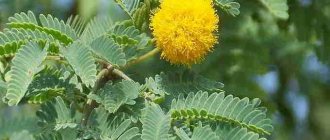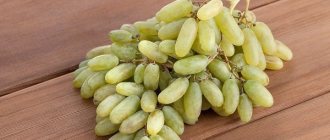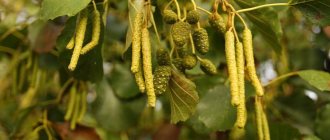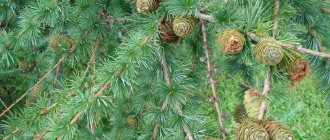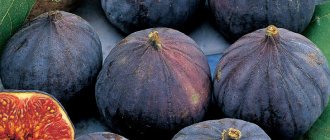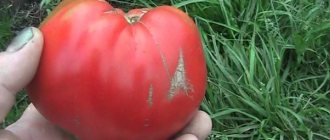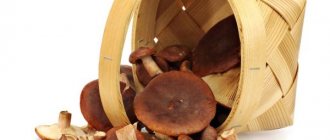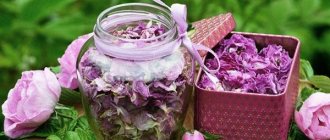Introduction
European olive
The olive tree or European olive (Olea europaea) is a tree of the Olive family, the fruits of which are used to obtain olive oil. Interesting fact: in total there are more than 30 representatives of the olive genus, but only the olive tree is not found in nature in the wild.
Over thousands of years of coexistence with humans, the olive has been completely domesticated and has long been a typical garden crop. According to the botanical classification of fruits, the olive is a fruit. This is a fairly fertile tree, its yield is about a hundredweight. Relatives of the culture, members of the same family, are ash, jasmine and lilac.
The tree is heat-loving and develops and grows normally only in warm climates. The main distribution area of the olive is the Mediterranean (Greece, Italy, Spain) and the Middle East. Olives can also be found in Turkey, Bulgaria, Crimea and the Caucasus.
An olive tree can be grown in an ordinary apartment
The olive tree cannot be called unpretentious. Even in some areas of the subtropics it is uncomfortable, not to mention the temperate climate zone. Attempts to adapt the olive tree to temperate latitudes (even in areas bordering the subtropics) have so far been unsuccessful: olive trees do very poorly at temperatures below -5°C.
This circumstance still raises questions among botanists, since many peach crops, which have the same habitat as the olive, adapt well to the north. But if you provide the plant with the necessary temperature conditions, it can be grown in an apartment or greenhouse without any problems. The article discusses how you can plant, grow and propagate an olive tree at home.
Important conditions without which the harvest cannot be harvested
Of course, they start a homemade olive tree not for the purpose of harvesting a large harvest, but the presence of fruits, firstly, greatly decorates the tree itself, and secondly, it pleases the owner, as a sign that his efforts and labors in maintaining the plant are not in vain.
A dwarf olive can give its owner about 600 grams of fruit in a successful season. This is no more than 20 olives. A full-fledged tree will allow you to harvest about 2-3 kg of harvest from it.
Dwarf olive with fruits. Source: landscapedizajn.ru
In order to grow a fruit-bearing olive tree, you will need to follow some subtleties.
- Remember that, firstly, the time of the first fruiting directly depends on the method in which you grew the tree.
Let us remind you that a tree grown from a seed will begin to bear fruit only at 10 years of age. A seedling grown from a one-year-old cutting will bear fruit in 2-4 years.
In addition, there are types of olive trees that, regardless of the method of cultivation, produce the first harvest after as many as 10 years. Check all the properties of the planting material before purchasing it so as not to be disappointed in the plant and the result of its maintenance.
- An important condition for fruiting is the correct temperature regime of the tree. If the plant lives all year round at a constant room temperature above 20 degrees, then you shouldn’t count on a lush flower, and, therefore, a bountiful harvest.
- The olive is a dioecious species, which means it must have male and female cells to produce fruit. In nature, plant pollination is carried out by wind. At home, you will have to help in this process with the help of available materials, for example, a brush or regular shaking of flowering twigs.
If you observe such small but significant nuances, the olive tree will definitely answer you with gratitude and delight you with the first fruits.
This is interesting! Despite many attempts to plant olives in the natural environment or in one’s own garden in latitudes far from the Mediterranean, such experiments have never resulted in successful fruiting. Olive cannot tolerate temperatures below -5 degrees. Whereas it was indoor or greenhouse cultivation of an olive tree at home that gave the most beneficial results and has long been no longer something surprising.
The first fruits of the olive. Source: sotmarket.ru
Description of culture
Olive Tree
The olive tree is an evergreen shrub or tree. Its trunk has gray bark and gnarled, twisted branches. Olives over 30 years old become hollow. In the plant world, this species is a long-liver.
On average, an olive tree lives about 500 years (although trees older than 30 years are not used for industrial cultivation - they are replaced with new ones), but there are some specimens that live for more than 2000 years.
Olive tree leaves and fruits
The leaves of the plant are simple, practically without petioles. Their shape is elongated, color is gray-green. The leaves are smooth and leathery to the touch. Leaves do not fall en masse. Foliage renewal occurs once every 2-3 years. It is possible that the plant sheds some of its leaves during a sudden cold snap.
The flowers are small (no more than 4 mm in length), white or yellow-white, united in paniculate inflorescences of 10-40 pieces. The flowering period, depending on the habitat, stretches from April to July. Blooms once a year.
The fruit of the olive tree is a small drupe, from 5 mm to 4 centimeters long, 1-2 cm in diameter, with a pointed nose. Around the fruit there is a fleshy pericarp, which, in fact, contains oil. The color of the fruit depends on the varietal variety of the tree and its degree of maturity.
Typically, there are three types of fruits: green, black and purple. There is often a waxy coating on the surface of the fruit.
Olive harvest
Ripening occurs within 4-5 months after flowering. The tree brings its first harvest in 3-4 years of life, as a rule, it does not exceed 40 kg, but in the next 10-15 years the yield is significantly higher (up to 100 kg); in older trees it gradually decreases with age. But even old specimens, with proper care, produce at least 30 kg of harvest.
European olive or olive tree
26.12.2018 European olive
or
olive tree
(Latin
Olea europaea
, Olive family) is a slow-growing, evergreen, fruit-bearing tree or shrub that lives in a subtropical climate. Olive is rightly called one of the oldest garden crops on Earth. Its homeland is presumably the territory of Asia Minor and Syria, where wild olives can still be found today. They form real forests near the Mediterranean Sea, on the southern coast of Anatolia.
The olive tree is an important element of the Mediterranean vegetation and cultural landscape. Olive groves are partially found in some coastal areas of the Black Sea region, not exposed to extreme climatic conditions. After the exploration of the New World by colonialists, olives began to be grown in the appropriate climatic conditions of North and South America. The first olive tree was planted by Spanish conquistadors in 1560, in Lima (Peru), from where the culture spread to Mexico, the USA (California), and the Hawaiian Islands. Today, olive plantations can also be found in Australia, South Africa, and Japan.
All olive growing areas are located between 30° and 45° north and south latitudes. The most optimal climate for them is close to the Mediterranean, that is, the average annual temperature is +15...20°C and the annual precipitation ranges from 500 mm to 700 mm (with a required minimum of 200 mm). The trees are highly heat and drought resistant, but suffer greatly in cold winters from destructive low temperatures. Prolonged exposure to even moderate frosts threatens not only the harvests of individual years, but also the existence of entire plantations. An example of this is the severe cold snap in Eastern Europe in February 1956, which destroyed millions of olive trees in the south of France, Italy and Spain. The northernmost olive grove that currently exists is on the island of Anglesey, off Wales, in the Irish Sea.
The name "olive" comes from the Latin Olivum
, meaning "olive fruit", "olive tree", which in turn may have been taken from Archaic Greek ἔλαιϝον (
élaiwon
), which in Classical Greek ἐλαία (
elaía
) has the same meaning: "olive fruit", "olive tree". Nowadays, in many languages of the world the word “olive” is translated as olive tree oil.
The first evidence of the cultivation of olive trees in the Mediterranean basin dates back to approximately the 4th century BC. e. Olive pits and wood fragments have been found during excavations of ancient tombs. It is known that in 3000 BC. e. olives were grown commercially in Crete. The ancient Greeks, having studied the beneficial properties of olive trees, and especially their fruits, began cultivating plants as a source of valuable vegetable oil. The olive fruits themselves were of great nutritional importance, and were consumed only after preliminary fermentation
.
Today, olive trees are a very important agricultural crop. World olive plantations occupy more than 11 million hectares, which makes it possible to produce about 23 million tons of olives annually, with a significant increase in these figures observed every year. Traditionally, the largest producers are Spain, Greece and Italy, which grow almost 60% of all olives in the world. The top ten olive oil producers include: Algeria, Argentina, Egypt, the European Union (28 countries), Iran, Israel, Jordan, Lebanon, Libya, Montenegro, Morocco, Palestine, Tunisia, Turkey and Uruguay. They provide up to 95% of the world's production of this product.
Olives are heliophilous
plants, so any shading has a depressing effect on them and significantly reduces the abundance of flowering. Trees also react poorly to lower temperatures. Already at +3...4°C one can observe drying of the tips of their shoots. And frosts down to -7...10°C can cause significant damage to the crop, causing the death of its vegetative part. The action of strong winds, especially together with low temperatures and excessive rainfall, is also unfavorable for the development of olive trees. These factors must be taken into account when organizing olive cultivation.
In addition to sunny, warm and dry climates, olive trees prefer loose or medium-structured, well-drained soils rich in lime. They can also grow in rocky and shallow soils in rocky areas. Heavy soils prone to stagnant moisture cannot be used for growing olives. The crop is quite undemanding in terms of soil fertility: it can grow on poor soils with a reaction that is far from neutral (pH 8.5...9). Olive is one of the few crops that can grow in salinity conditions, so it is often grown on sea coasts.
The root system of the olive tree develops depending on soil conditions, but the bulk of the adventitious roots are concentrated in the fertile layer, no deeper than 0.7 - 1 m. On loose soils, the main roots of the tree grow vertically, penetrating to a depth of 7 m, and in hard soils and rocky soil, the root system is formed in the form of a highly branched surface network. This feature of the plant explains its ability to withstand long (sometimes up to several months) dry periods. Olive trees survive long, dry summers without damage, resuming their vegetative activity only with the onset of rains. Lack of moisture still negatively affects the quality of the crop. It is especially critical during flowering, fruit formation and growth.
The olive tree can reach a height of 10–20 m, but in industrial plantings it undergoes regular pruning for ease of harvesting, so the tree’s growth rarely exceeds 5–10 m. The lifespan of the plant is several centuries; there are specimens up to 1000–1600 years old or more. . Unlike other representatives of fruit trees, olives do not cease to please with their harvest even after a thousand years of age. Having reached an industrial level of fruiting by the age of 50, olives continue to increase their productivity every year. And although old trees do not bear fruit every year, their yield is impressive.
With age, the olive tree forms a very branched crown over a short, but rather thick, knotty and hollow trunk, and the smooth gray-green bark, characteristic of young trees, cracks and acquires a dull dark gray, sometimes brownish-gray hue. Very strong, heavy and durable olive wood has a beautiful texture and is easy to polish, so it is used for inlaying expensive wood products, making wind instruments, furniture parts, carved crafts, souvenirs, kitchen utensils, etc.
The leathery olive leaves are lanceolate or oval in shape, they reach 4–10 cm in length and 1–3 cm in width. The upper surface of the leaves is grayish-green, and the lower surface is silvery. During flowering, which, depending on the climatic zone, can occur from late April to mid-June, racemes of 10 to 15 small, but very fragrant four-petaled flowers of white or cream color, pollinated by the wind, are formed on the olive trees.
Fruiting of olives occurs no earlier than 3–4 years after planting, and full harvests can be collected on trees nine or ten years old. The fruit is a small drupe of ellipsoidal, sometimes almost spherical shape, from 0.7 cm to 4 cm long and 1 – 2 cm in diameter. As olive fruits ripen, they change their color from light green to almost black with a purple or brownish tint. It is customary to call unripe, green fruits olives, and fully ripe, dark ones are olives. Sometimes canned olives are given an artificial black color by keeping them in alkali, then exposing them to oxygen and finally placing them in a solution of ferrous gluconate (E 579).
There are three areas of industrial olive growing. Depending on the final purpose, they are cultivated for: pressing olive oil, growing table varieties of olives, or combining both of these options. About 90% of the harvested olives are processed to produce olive oil. This product is in great demand, so even with the existing high competition among manufacturers, its price does not fall below $4,200/t (wholesale sales).
The pulp of ripe olive fruits consists of 50 - 70% water, it also contains vegetable fats (6 - 30%), sugars (2 - 6%), protein (1 - 3%), fiber (1 - 4%), ash (0.6 - 1%). The beneficial properties of olives are associated with their constituent vitamins A, group B (thiamine, riboflavin, niacin, choline, pantothenic acid, pyridoxine, folic acid), E, K and antioxidants. In addition, the fruits are rich in elements such as sodium, potassium, magnesium, calcium, phosphorus, iron, copper, selenium, zinc. Highly valuable nutrients are contained not only in the pulp of olives of varying degrees of ripeness, but also in their pits, which are completely processed in the gastrointestinal tract.
Table olives, depending on the degree of ripeness, are classified into three groups:
1. Green olives
They are harvested at the stage of milky ripeness, when they reach full size and their skin acquires shades from green to yellow.
2. Semi-ripe
or
colored olives
are harvested early in the ripening cycle, when their color begins to change from green to a multi-colored palette of red-brown hues. Unlike ripe olives, the flesh of the fruit at this stage has no pigmentation, only the skin is colored.
3. Olives
or
ripe olives
are harvested at full ripeness, when they are fully ripe. Their color comes in different shades, from purple to brown or black.
Before eating, green olives are pre-treated, since their fresh pulp contains many bitter phenolic compounds, including oleuropein
. The fermentation process is carried out using an alkaline medium (2 - 4% NaOH solution), repeated washing with water, immersion in brine (8 - 12% NaCl solution), etc. As a result, oleuropein and other unfavorable phenolic compounds are washed out and broken down. The process ends with the formation of metabolites from bacteria and yeast, such as organic acids, probiotics, glycerin and esters, which significantly improve the taste of the olives. Ripe olives are not always fermented. As the fruits ripen, phenolic substances are converted into other organic products, their levels decrease significantly, which makes ripe olives completely edible.
Choosing olives for home growing
Olive tree branch with fruits
The most popular groups of olive varieties are Cape olive, European olive and golden leaf olive.
Conventionally, all olives are divided into the following groups:
- Oilseeds . As the name suggests, they are used to produce oil. These varieties are not recommended to be grown at home, since their fruits not only have a specific taste, but the plants themselves require special care, which will be problematic to provide if there is a limited volume of soil in the pot.
- Combined . They are a universal variety, used both for the production of oil and for consumption in raw and canned form.
- Canteens . They are used exclusively for eating fruits. They are recommended to be used for indoor growing.
Olive Grove
The following varieties of olives are best suited for growing at home:
- Sabina
- Zinzala
- Cerignola
- Della Madonna
- Razzo
- Kramskoy
- Urtinsky
- Nikitinsky
Even when using a large-volume container, fruit-bearing trees at home will produce fairly modest yields - no more than 15-20 fruits (about 600 g).
Description of the olive tree and variety
The olive tree belongs to the olive family, there are about 30 species. His homeland is Greece. Varieties with high disease resistance are suitable for growing at home: Della Madonna, Nikitinsky, Razzo.
Thanks to the focused work of breeders, miniature varieties of the olive plant were bred for growing at home in pots. Indoor trees are evergreen, low-growing plants with a dense crown that tolerates pruning well. The productivity of these forms is low; they are of decorative value.
Gardening stores sell olive tree seeds that you can grow at home. It is best to buy 4 or 5 packets of seeds because it is almost impossible to grow an olive tree on the first try. You will have to spend a lot of time and effort, and be patient. But it's still worth trying. Currently, interest in this plant has increased due to numerous publications about its beneficial properties.
Growing conditions and care for olive trees
Olive Tree
In order for a plant to exist comfortably, it needs certain conditions for temperature, lighting, watering and fertilizing. They are discussed in more detail below:
Priming
European olive
The soil for an olive tree can theoretically be anything. The main requirement is that the soil should not be acidic. You can use ready-made mixtures or substrates for indoor plants, or you can make your own soil.
To do this, mix the following components in equal proportions:
- compost
- sand
- turf and leaf soil
- peat
To avoid a possible acidic environment in the soil, lime is added to it. Although the olive is not a pronounced calciphile, it does better on alkaline soils than on neutral ones.
Lighting
The lighting of the tree should be sufficient, but without direct sunlight.
The subtropics have a large number of sunny days a year, so there should be a lot of light. When young, the olive tree should be located near south-facing windows or on a windowsill.
An older tree prefers partial shade, but there is no need to shade it too much or place it in a corner. The optimal growing location is an insulated balcony or loggia located on the south side of the building.
Temperature
In the summer, pots of olives can be placed outside
One should not think that the olive tree must remain in an exceptionally warm environment all year round. In summer and spring, it can be in any room with a temperature of at least +20°C; in winter or autumn, temperatures should be slightly lower.
The optimal temperature at this time will be +10-12°C. This will correspond to a period of rest in the life of the olive. Usually, for this purpose, the container with the plant is taken out onto an insulated balcony or loggia. A similar procedure will stimulate the growth of buds and budding of the plant in the next season.
Watering
Olive tree, growing at home
The plant can tolerate droughts, but there is never too much moisture for an olive. This does not mean that the substrate should be wet all the time - such phenomena will negatively affect the health of the roots. However, as the top layer becomes dry, the plant will need deep watering to ensure moisture reaches the bottom of the pot. Typically, water the plant 2 to 3 times a week.
The plant loves sprinkling. This procedure will be especially useful during the summer heat. In winter, this procedure can be omitted if the olive overwinters in a cool room. If it is located year-round in conditions with air temperatures above +20°C, sprinkling should be carried out regularly. The recommended frequency of the procedure is once a week.
If there is a heat source near the wintering olive that causes dry air (radiators or a heater), sprinkling is a mandatory procedure, performed with such frequency that the leaves and bark of the tree do not dry out.
Feeding
Olive Focus – a complete specialized fertilizer for olives
In spring, it is necessary to feed the olive tree with nitrogen-containing mineral preparations or organic matter 2 times a month. In summer, a single application of complex phosphorus-potassium mineral fertilizer is necessary.
It is also possible to apply nutrients by foliar application. For example, it is recommended to spray the leaves with succinic acid monthly.
Trimming
Formative pruning of olive tree with pruning shears
Thinning pruning is done once a year. Typically, weaker branches that grow inside the bush and cause excessive thickening of the crown are pruned. Thinning pruning is often combined with formative pruning.
It is believed that a spherical crown for indoor olives will be ideal; in addition, such a crown is easier to care for. Pruning is done with ordinary pruning shears; the cuts after it must be covered with garden varnish.
Transfer
Olive tree that has undergone several transplants
As the root system grows, the plant needs regular replanting into larger containers. Typically, this procedure is performed every 2-3 years. In this case, the pot into which the olive tree needs to be transplanted is selected with a diameter 3-5 cm larger than the previous one.
The olive is replanted by transferring an earthen clod. The pots in which the olive tree is grown must be made of clay to allow the root system to breathe.
Clay pots with olives after the first transplant
It is necessary to lay 3 cm of expanded clay or broken brick drainage at the bottom of the new pot to prevent waterlogging of the soil.
Beneficial and harmful properties of olives
Everyone knows that olives have a specific taste that not everyone likes. But if you look at their beneficial properties, you will immediately want to eat more of them. Let's see why olives are so beneficial:
- Olives stimulate the digestive system, activate enzyme synthesis and intestinal peristalsis. In a short time, they restore the gastrointestinal microflora and promote food digestion.
- They have a positive effect on the cardiovascular system: blood circulation accelerates, the walls of blood vessels are given elasticity and firmness, and damaged ones are restored over time.
- With regular use, the blood begins to thin out, which prevents blood clots. The occurrence of vascular spasms is also prevented, and this helps to cope with frequent migraines.
- Due to the calcium content, eating olives has a positive effect on the musculoskeletal system. Bones become stronger.
- In women, olives normalize hormonal levels and increase the likelihood of conception.
- The berries have a choleretic effect, which helps restore the liver.
- Oleocanthal, recently discovered in olives, reduces the risk of cancer cells and also kills them in the early stages.
- Removes waste, toxins and other harmful substances and metabolic products from the body. So it is recommended for use by those who live in environmentally unfavorable areas.
- It has a positive effect on the nervous system: helps cope with stress, depression and other disorders. Accelerates the recovery process after a stroke.
- Stimulates the immune system, helps fight pathogenic bacteria and viruses.
For other beneficial properties of olives, watch the video below.
Author's note
Natalia Papanova
Blog author
The fruits of the olive tree are not eaten raw: they have a bitter taste.
Sometimes olives can cause allergies. The fruits also contain a lot of salt, so they are contraindicated for:
- gastritis with high acidity;
- cystitis;
- children under three years old;
- breastfeeding mothers.
As mentioned above, olives speed up the process of bile production. Therefore, they are not recommended for use when:
- pancreatitis;
- cholecystitis;
- kidney stones and cholelithiasis.
Many fruits and vegetables are healthy when dried. So you can read how to dry carrots. Dried, it perfectly retains its vitamins.
Either canned or pickled olives are eaten.
Planting a plant
Planting olive tree cuttings in a moist substrate
There are several ways you can purchase material for planting olives at home. The simplest and cheapest is to root the cuttings. Plants obtained from cuttings produce their first harvests within 3-4 years of life.
Material for cuttings is prepared in the summer, when the plant is at its maximum activity. Typically, shoots 2-4 years old are used for cuttings. Branches up to 20 cm long are cut from them. The thickness of the cuttings should be at least 3 mm.
The cuttings are soaked for several hours in a growth stimulator (such as Epin or Kornevin), and then transferred to a jar of water. The cutting is kept in it until the first roots appear. An alternative would be to plant the cuttings in a moist substrate for young plants, mixed in a 1 to 1 ratio with sand.
Successful rooting is possible if the following conditions are met:
- good lighting without direct sunlight; You can use light diffusers on windows in the form of white paper
- the temperature in the room where the cuttings are located should be at least 20°C
- indoor air humidity – at least 65%
After about a month, the first young shoots can be seen on the cuttings. After this, the rooting site should be covered with plastic film or glass. The plant stays in this form for 4 months. At the same time, the air in the room is humidified daily and regular sprinkling with warm water is carried out. After 4 months of rooting, the cuttings are planted in a permanent habitat.
Olive tree at home
Germination can be accelerated by increasing the temperature to +27°C. At the same time, water can evaporate from the soil faster, which will lead to even more intensive watering. In such a situation, it is advisable under no circumstances to allow the soil to dry out, so as not to destroy the young roots.
Another growing method is to use seeds. To do this, you can take a pit from a fresh or dried olive and try to grow a plant from it. This procedure is very long and labor-intensive; in addition, the first harvest will be obtained only after 10-12 years.
Sometimes a tree grown in this way is used to graft onto it another variety obtained from a cutting.
First, the pit without pulp is soaked in a weak alkaline solution (10% sodium hydroxide) for a day. This will soften its shell and allow the embryo to pass through it without problems. Next, the seed should be washed and planted to a depth of 1-2 cm in a pot no more than 10 cm in diameter. As a substrate, you can use ordinary soil for indoor flowers.
A sodium hydroxide solution, even in such a low concentration, poses a danger to the skin and mucous membranes of the eyes. It is recommended to use gloves and safety glasses when soaking seeds in alkali.
Gardeners and flower growers will need to be patient: despite the relatively high germination rate of olive seeds (40-50%), the first shoots will begin to appear only after a few months.
It is recommended to plant several olive pits , as this will not only increase the likelihood of sprouts germinating, but will also ensure that they have some genetic diversity. Even from the same mother plant, different fruits are obtained, despite the fact that vegetative propagation is banal cloning.
Two-year-old olive tree seedlings
The methods of planting olives described above are, in fact, ways of propagating them. Their effectiveness varies, but each is used for a different purpose. For example, obtaining new varieties and varieties is impossible without propagation by seeds.
Cuttings are the most effective way of vegetative propagation of olives to obtain quick harvests. If the olive is propagated by cuttings, it allows you to get the first fruits after 3 years.
The fastest way to get a young tree is to purchase it or get it somewhere. But there is one not entirely pleasant point here: commercially sold 2-year-old planting material, ideal for planting, can be relatively expensive - more than $300 for one seedling.
Olive tree at home - what you need to grow it
In order for an olive to feel comfortable in a pot, it must be provided with warmth and light. The south side is the most suitable place, especially for young trees. Adult specimens can be placed near eastern windows.
The room temperature depends on the time of year:
- during the warm period, the olive feels good at plus 25 ° C, in addition, you can take the pot outside in the summer;
- In winter, the tree needs coolness (no higher than plus 12 °C), especially for the formation of flower buds.
Air humidity is also important. When kept warm, it should be increased, and in winter - only if it is not possible to keep the olive cool.
Disease and pest control
This is what the action of an olive moth larva looks like
In general, the olive tree has increased immunity, which allows it to successfully resist most diseases and pests. However, if there is a lot of moisture, the olive tree may be at risk of infestation by bacteria, fungi and insects.
One of the unpleasant problems in growing olives is tuberculosis. Its symptoms are large swellings on the branches and trunk of the crop. There is no cure. It is necessary to remove and destroy damaged fragments. With a small amount of swelling, it makes sense to cut off the damaged areas and treat them with copper sulfate.
Another problem associated with high humidity is the appearance of rot and rust. All these are fungal infections. In this situation, everything is much simpler - it is enough to treat the olive with any fungicide (for example, Maxim or Fundazol).
Plant pests are:
- olive moth
- whitefly butterfly
- different types of scale insects
Whitefly
The following drugs help effectively combat them:
- Aktara
- Aktellik
- Decis
- Karbofos
When using these insecticides, you must follow the instructions exactly. In addition, since all of them are toxic substances, it is necessary to take care of the safety of the living space.
While the plant is being treated with drugs, it is best to move it to a separate room.
Considering the rather long history of growing the olive tree, we can say that its immunity is quite strong and the reason for its weakening, leading to diseases, is a violation of the conditions of the plant.
With the right approach to growing and timely implementation of all necessary procedures (watering, fertilizing, replanting, etc.), most diseases and pest attacks can be avoided.
Olive propagation methods
An olive tree can be grown at home using seeds or cuttings. Each of these methods has its own advantages and disadvantages .
Seeds
Growing olives from seeds is a rather time-consuming and labor-intensive method. It can take as much as 15 years for the first fruits to appear after planting. For planting, fresh seeds with a shell dissolved in alkali are used. Germination occurs after three months. For the first five years, the seedling needs to be replanted annually, after which replanting is carried out every couple of years.
Cuttings
Vegetative propagation is the fastest way to grow a plant. With this method, the seedling inherits the characteristics of the variety and blooms much faster.
First you need to prepare annual cuttings, treating the cut sites for rooting. The cuttings should be planted in wet sand in a transparent container. It is necessary to maintain a temperature regime of about 20 degrees Celsius. It is necessary to moisten the plant in a timely manner. The cuttings should be transplanted to a permanent place in late summer, early autumn.
Features of caring for a flowering plant
Blooming olive branch
During flowering, you should follow simple rules that will help the plant to be guaranteed to set fruit:
- Watering and sprinkling are carried out only after the top layer of soil has dried. In this case, as noted earlier, watering should be abundant until the soil is completely moistened (to the bottom of the pot)
- The tree must receive a lot of light - after the olive blooms, it must be provided with at least 14 hours of daylight. In cloudy weather, the plant needs to be “additionally illuminated” with phytolamps. It is believed that pink lamps are best suited for this purpose.
- Self-pollination should not be relied upon. It is recommended to gently shake the branches so that pollen falls from one inflorescence to another. As a last resort, you can use turundas and transfer the pollen manually. The ideal option (possible when several olives are grown) is to transfer pollen from one to another, thus creating cross-pollination
Care
The principle of life of the olive is quite simple: the phase of growth and development, flowering, fruiting, dormancy or wintering. New growth appears in February - April, when daylight hours increase and the plant begins to receive more light. Before this, the flower is dormant. During the dormant period, the plant accumulates strength. If the tree is strong enough, flowers appear at the end of April. Flowering lasts several months, on average until early July. To ensure healthy fruit production, it is best not to rely on self-pollination. Gently shaking the branches promotes the exchange of pollen between different inflorescences. You can use cotton swabs and transfer the pollen by hand. To ensure abundant flowering, in autumn and winter the olive tree is provided with a period of rest (from November to February, when metabolic processes slow down), taken to an insulated balcony (10-12 degrees), watering is reduced, and not touched. The manipulation is carried out with plants older than five years that have not been replanted for a year. If fruiting is not planned, then in addition to the above steps, to care for the European olive at home, artificially form the crown. It is advisable to remove young shoots from the trunk so that growth occurs upward, and not in width, and the tree does not become like a thicket. In mature plants, dry or weak branches are pinched off. Decoration is achieved quickly if pruning is carried out regularly.
Growing olives at home gives you the opportunity, with sufficiently competent care, to get up to 2 kg of harvest. In apartment conditions, it bears fruit once every two years. Olive is not an easy crop; nurturing it for the first six months can be more difficult than any other greens. In particular, many difficulties arise if you grow from seeds: the seeds are capricious, germination often does not exceed 50%, and fresh shoots often lose their viability. But do not despair, because there are easier methods of propagation that bring much better results, such as cuttings and grafting.
How to guarantee a harvest
Set fruits of the plant
Do not forget that “potted” cultivation is a kind of “starvation ration” for the plant, so if it suddenly lacks some component, the process of fruit set and ripening may be jeopardized.
In order to help an olive tree grow normally in containers to form fruits, you need to:
- 6-7 weeks before the expected ripening date, carefully monitor the feeding and watering schedule and do not skip anything
- Be sure to give the plant a rest period and move it to a room with a temperature of +10-12° degrees. This will significantly increase the number of generative buds on the olive.
- During formative pruning, first remove old shoots older than 2 years, since only last year’s branches actively bear fruit.
How to grow an olive at home from a seed
Now let's move on to cultivation. I hasten to please you: there is nothing complicated here. All you need to do is follow the recommendations I give.
In addition to this material, read how to store zucchini at home. Then you won’t have to fool your head with the issue of growing crops.
Selection of containers and soil preparation
First, let's talk about packaging. For seed germination and seedlings to emerge, the size of the pots should be approximately 10 by 10 cm. Small deviations, both positive and negative, are acceptable. If the pot is too large, the root system will not have time to capture the entire volume of the substrate and will begin to rot. The following options are ideal:
- Plastic cells. They already have everything necessary for successful cultivation of crops: small size, convenient shape and drainage holes.
- Peat cups. They are a little expensive, but very convenient. Since during transplantation the sprout is placed in a new place directly in the pot. As a result, the root system is not injured, experiences less stress and takes root faster. Yes, and there is additional fertilizer (peat, after all).
- Wooden boxes. You can sow many seeds in them at once. However, it is then inconvenient to plant the seedlings, since you have to tear them out of the ground. As a result, the roots are injured and the plant experiences stress.
- Available materials. These can be plastic cups, containers for yogurt, milk, kefir, and so on. The main thing in this case is to remember to make drainage holes at the bottom, otherwise moisture will stagnate in the soil.
If we talk about the pot in which the olive will grow until fruiting, then two points need to be taken into account:
- Size. The volume of the pot should be 3-4 times the volume of the root ball of the indoor olive tree.
- Material. Pots made of natural materials (ceramics, wood and others) are best suited for olives. I use clay pots. They absorb excess moisture well and release it back if necessary.
Author's note
Natalia Papanova
Blog author
Before use, pour boiling water over the pots to kill any infection on the surface.
I prepare the soil myself. And I advise you to do so. Because olive is very picky about soil. I selected the following composition especially for this culture:
- lowland peat;
- leaf soil;
- river sand;
- compost;
- ash;
- drainage (pebbles, expanded clay, crushed stone, etc.).
I mixed the first three components in the following proportion: 5 parts peat, 2 parts leaf soil and 3 parts river sand. I added compost at the rate of ⅕ of the total volume. I added ash: you will need 100 g for every 10 kg of finished soil. That's all. Drainage is poured into the pot in a layer of 3-5 cm.
To learn how to prepare universal soil for plants, watch the video:
If you don’t want to prepare the soil yourself, then you can buy ready-made soil. I recommend these: “A Nerd's Dream”, “The Good Earth” and “Exo”. I tried each of them and was satisfied.
Before use, any soil must be disinfected. You can do this in the following ways:
- Etch. To do this, take 5 g of potassium permanganate and dilute it in 10 liters of water. Heat the solution to 70 degrees and pour the soil generously. After drying, you can plant seeds in it.
- Steam in a water bath for 10-12 minutes, stirring constantly to warm up the entire volume.
- Heat in the oven for 30-40 minutes at 50 degrees.
Author's note
Natalia Papanova
Blog author
Do not raise the oven temperature above 50 degrees, otherwise the beneficial bacteria will die.
Soil disinfection protects sprouts from diseases
Use in folk medicine
Decongestant, diuretic decoction for hypertension and obesity, as well as for the prevention and treatment of atherosclerosis. Take 10 g of dry, crushed European olive leaves and add to 250 g of water. Boil in a water bath for 7 minutes. Filter and add water to the nominal volume. Dosage: before meals, drink 20 g / 3 rubles 20 minutes before meals. in a day.
Cough medicine: Mix 34 g olive oil, 12 g honey and 1 egg yolk. Dosage: upon awakening and in the evening, before going to bed, one dessert spoon.
Cleanser for ulcers and boils Grind fresh olives until mushy and add a little vinegar. Apply the mixture to the affected areas of the skin.
Remedy for strong poison and poisoning
Drink warm boiled milk with the addition of olive oil in a ratio of 250 ml/50 ml until you vomit. Repeat until the stomach is cleansed. Antihistamine, laxative drug Drink olive oil in its pure form from 10 g and it is possible to increase the dose to 150 g, depending on the degree of constipation or helminth infection. Repeat the techniques periodically until the desired effect is achieved.
Remedy for headaches
Instill European olive oil into the ear for migraines and headaches.
Infusion for lowering blood pressure No. 1 Chop 75 dry olive leaves, pour into a liter jar, add boiling water to the brim. Close the jar tightly, wrap it in heat and leave for 24 hours. After a day, filter the infusion. Dosage: before meals, about half an hour, drink 80 ml / 3 rubles. in a day. Duration of treatment is 14-21 days. Infusion for lowering blood pressure No. 2 In the evening, crush 1 glass of dried olive leaves (by volume) and pour into a thermos, into which then pour half a liter of boiling water. After keeping the infusion all night in a thermos, in the morning you can filter it and half an hour before meals, drink the entire infusion during the day, dividing it into three doses.
Oil infusion for atherosclerosis
200 g of olive fruits are ground and placed in a thermos. Heat olive oil to 60°C and pour into a thermos with crushed olives. You should insist for two days. You need to take the finished product before meals, 17 g/3 rubles. per day Contraindications The only limitation in the use of masliye is individual intolerance.
Olive fruits for atherosclerosis
Ingredients: 200 g olives, 300 ml vegetable oil.
Method of preparation: chop the olives, put them in a thermos, heat the oil to 60 °C and pour it over the olives, leave for 2 days.
Directions for use: take 1 tbsp. 3 times a day before meals.
Infusion of olive leaves for high blood pressure
Ingredients: 1 tsp. olive leaves, 200 ml water.
Method of preparation: pour boiling water over the leaves, leave for 10 minutes, then strain.
Directions for use: take 1-2 tbsp infusion. 3 times a day.
Infusion of olive leaves and fruits for swelling
Ingredients: 1 tbsp. crushed olive leaves and fruits, 250 ml of hot water.
Method of preparation: pour the plant material with water, simmer for 5-10 minutes. in a water bath, then strain and add warm water to obtain the original amount of liquid.
Directions for use: take the infusion 3 times a day, 1 tbsp. in 20 minutes before meals.
For inflammatory diseases of the gastrointestinal tract
Olive oil is used 50 ml 1-2 times a day before meals.
For hypertension, as a diuretic for edema, as well as for the prevention and treatment of atherosclerosis and obesity, the following decoction of leaves is prescribed:
1 tablespoon of dried raw material is poured into 250 ml of hot water, left in a water bath for 5-10 minutes, filtered and brought to the original volume with boiled water. Take 1 tablespoon 3 times a day 30 minutes before meals.
As an anthelmintic and for persistent constipation
Olive oil is taken from 1 teaspoon to 1 teaspoon, repeating the doses periodically.
For headaches, warm oil is instilled into the ear.
When treating cough, olive oil is mixed with egg yolk and sugar.
Apply 2 teaspoons morning and evening.
To cleanse malignant ulcers, they are smeared with a paste of ripe olive fruits mixed with vinegar.
How to choose olive oil.
Each of us always wonders how to choose the right olive oil from the huge variety offered?
Like all vegetable oils, olive oil can be refined or unrefined. So, the most useful is unrefined olive oil, since during refining the oil is exposed to high temperatures, thereby losing its beneficial qualities.
Experts consider raw, cold-pressed unrefined olive oil to be the best in quality. This Provençal olive oil, with an acidity of no higher than 0.8%, is considered to be of the highest quality and is used in ready-made dishes.
Useful properties and contraindications
Elderberry: beneficial properties and contraindications In addition, the content of the following substances is noted in the fruits of the European olive: pectins, fatty acids, sugars, proteins, oils. Also acids: palmitic, arachidic, linoleic, oleic, stearic. Thanks to this healing composition, olives help reduce the level of bad cholesterol in the blood, have a beneficial effect on the cardiovascular system, protecting against diseases such as stroke, atherosclerosis, heart attack, aneurysm, thrombophlebitis. Olives also have powerful antioxidant properties, which significantly reduces the process of withering and aging, and also protects against cancer. The enzymes and bitterness in olives have a magical effect on digestion and increase appetite. The leaves are also a storehouse of useful substances: organic acids, rubbers, flavonoids, glycosides, bitterness, tannins and so on.
The use of leaves in treatment is very effective for high blood pressure. Pharmaceutical preparations containing olive derivatives: “HALAGOL”, “CISTENAL”, “OLIMETIN” - an effective anti-inflammatory, biliary, diuretic, antispasmodic agent, copes well with the problem of kidney stones and gall bladder. The use of oil for medicinal purposes is quite varied. It is used as a laxative, enveloping, antitoxic, emollient, protecting against the development of atherosclerosis and a biliary agent.
Propagation by cuttings
In this case, the olive tree retains all its maternal characteristics. The first fruits appear in the third, in rare cases in the second year. It is necessary to take two or three summer branches. Their cuts are carefully treated with a growth stimulant, after which the cuttings are planted in sand ten centimeters deep, and the seedlings are covered with glass on top (polyethylene can also be used for this purpose).
The optimal temperature for rooting is 25-27 °C. This usually occurs within a month, after which shoots begin to appear. After 3-4 months, the root system will be fully formed, and the seedling can be transplanted to its permanent place in a large pot.

